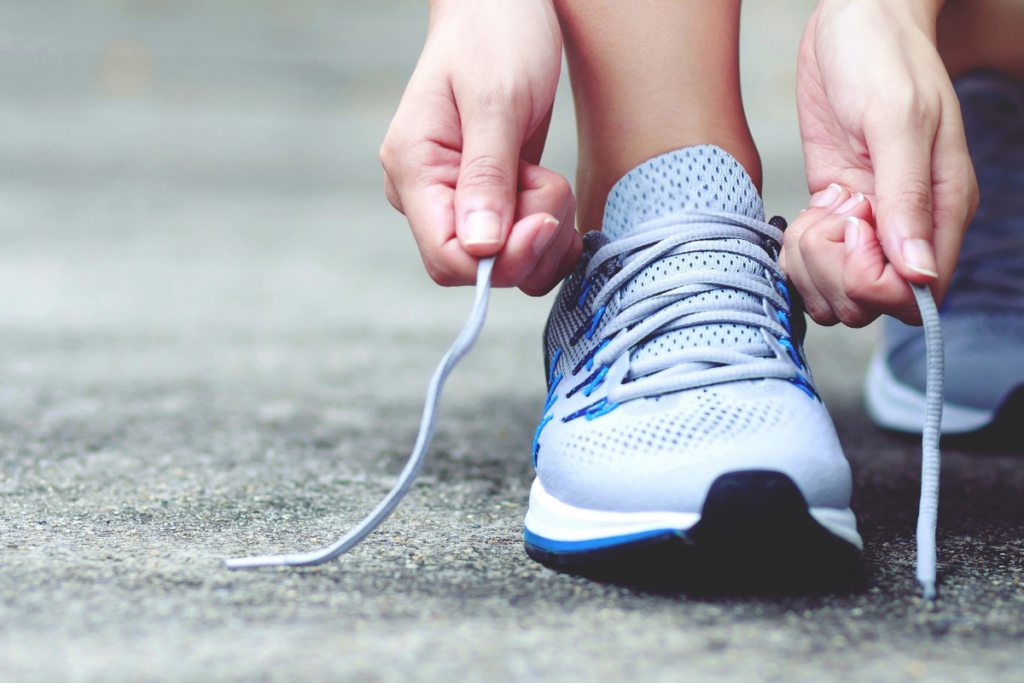 Struggling to Get Quality Sleep? Try These Practical Tips to Improve Your Sleep Habits and Overall Well-Being
Struggling to Get Quality Sleep? Try These Practical Tips to Improve Your Sleep Habits and Overall Well-Being
Numerous factors can disrupt a restful night’s sleep, ranging from work stress and family obligations to health issues. Given these challenges, achieving quality sleep can sometimes feel elusive.
While you may not have control over all the factors affecting your sleep, you can cultivate habits that promote better sleep. Consider incorporating the following simple tips to enhance your sleep quality.
Maintain a Consistent Sleep Schedule
Maintaining a consistent sleep schedule is key to promoting healthy sleep patterns and optimizing overall sleep quality. Going to bed and waking up at the same time every day, including weekends, helps to regulate your body’s internal clock, also known as the circadian rhythm. This consistency reinforces your body’s natural sleep-wake cycle, making it easier to fall asleep and wake up feeling refreshed. Irregular sleep patterns, such as staying up late on weekends and sleeping in, can disrupt this rhythm, leading to difficulty falling asleep and daytime sleepiness. To establish a consistent sleep schedule, choose a bedtime that allows for at least seven to eight hours of sleep per night and stick to it consistently. Consistency is key in training your body to recognize when it’s time to sleep, ultimately leading to better sleep quality and overall well-being.
Be Mindful of Your Eating and Drinking Habits
Being mindful of your eating and drinking habits plays a significant role in promoting better sleep quality. Consuming heavy or large meals close to bedtime can lead to discomfort and indigestion, making it difficult to fall asleep or stay asleep throughout the night. To avoid this, aim to have your last meal or snack at least a few hours before bedtime, and opt for lighter, easily digestible foods. Additionally, be cautious with stimulants such as caffeine and nicotine, as they can interfere with your ability to fall asleep and achieve restful sleep. It’s best to limit consumption of these substances, especially in the hours leading up to bedtime. Similarly, while alcohol may initially make you feel drowsy, it can disrupt sleep patterns and lead to fragmented sleep later in the night. To promote better sleep, consider opting for soothing herbal teas or warm milk as bedtime beverages instead. By making mindful choices about what you eat and drink, you can support your body’s natural sleep-wake cycle and improve overall sleep quality.
Create a Restful Environment
Creating a restful environment is crucial for promoting quality sleep and ensuring optimal restorative rest. To achieve this, start by minimizing light exposure in the bedroom, particularly in the evening, as dimming the lights signals to the body that it’s time to wind down. Maintaining a comfortable temperature is also key, with a cooler room temperature typically conducive to better sleep. Additionally, reducing noise disturbances by using earplugs or white noise machines can help create a tranquil sleep environment. Investing in a supportive mattress and pillows that align with your sleep preferences is essential for physical comfort. Keeping the bedroom clutter-free contributes to a sense of calm and relaxation, while establishing a soothing bedtime routine helps signal to the body that it’s time to prepare for sleep. Finally, limiting exposure to electronic devices before bedtime can minimize the disruptive effects of blue light on sleep quality. By incorporating these strategies, you can create a peaceful sleep environment conducive to restorative rest and improved overall well-being.
Limit Daytime Naps
Limiting daytime naps is important for maintaining a healthy sleep schedule and promoting better nighttime sleep quality. While a short nap can provide a quick energy boost and enhance alertness, napping for too long or too late in the day can disrupt the body’s natural sleep-wake cycle and make it harder to fall asleep at night. To prevent interference with nighttime sleep, it’s advisable to limit daytime naps to no more than one hour and avoid napping late in the afternoon or evening. Instead, aim to nap earlier in the day if needed, ideally in the late morning or early afternoon. By practicing moderation and timing your naps strategically, you can reap the benefits of daytime rest without compromising your nighttime sleep quality.
Include Physical Activity in Your Daily Routine
Incorporating physical activity into your daily routine is essential for promoting better sleep quality and overall well-being. Engaging in regular exercise not only helps to maintain a healthy weight and improve cardiovascular health but also has a positive impact on sleep patterns. Studies have shown that individuals who engage in consistent physical activity tend to experience deeper and more restorative sleep compared to those who lead sedentary lifestyles. However, it’s important to be mindful of the timing of your workouts. While regular exercise can promote better sleep, vigorous activity close to bedtime may have the opposite effect, as it can stimulate the body and make it harder to fall asleep. Aim to schedule your workouts earlier in the day, allowing for a few hours between exercise and bedtime to allow your body to wind down and prepare for sleep. Whether it’s walking, jogging, cycling, or participating in sports or fitness classes, finding activities that you enjoy and incorporating them into your daily routine can significantly contribute to improved sleep quality and overall health.
Manage Worries
Managing worries and stressors is crucial for promoting relaxation and preparing the mind for sleep. Persistent worrying or racing thoughts can make it difficult to unwind and fall asleep. To address this, it’s helpful to establish a pre-sleep routine that focuses on calming the mind and reducing anxiety. This may involve engaging in relaxation techniques such as deep breathing exercises, progressive muscle relaxation, or mindfulness meditation. Writing down your thoughts or concerns in a journal before bedtime can also help to clear your mind and alleviate worries. Additionally, practicing stress management strategies throughout the day, such as prioritizing tasks, setting boundaries, and practicing self-care, can help to reduce overall stress levels and promote a sense of calmness before bedtime. By adopting these techniques and incorporating them into your nightly routine, you can effectively manage worries and stressors, allowing for a more peaceful and restful night’s sleep.
Reference:
- Mayo Foundation for Medical Education and Research. (2022, May 7). 6 steps to better sleep. Mayo Clinic.



 Sleep awareness refers to the understanding and promotion of healthy sleep habits and the importance of quality sleep for overall well-being. It encompasses education about the physiological and psychological aspects of sleep, as well as strategies to improve sleep quality and address sleep disorders.
Sleep awareness refers to the understanding and promotion of healthy sleep habits and the importance of quality sleep for overall well-being. It encompasses education about the physiological and psychological aspects of sleep, as well as strategies to improve sleep quality and address sleep disorders.
 Engaging in exercise should not just be reserved for moments when you’re aiming to shed a few pounds or gearing up for a charitable race. For genuine success, it needs to become as ingrained in your routine as eating, sleeping, or taking your morning shower. Yet, as you are likely aware, this consistency can be quite challenging to achieve.
Engaging in exercise should not just be reserved for moments when you’re aiming to shed a few pounds or gearing up for a charitable race. For genuine success, it needs to become as ingrained in your routine as eating, sleeping, or taking your morning shower. Yet, as you are likely aware, this consistency can be quite challenging to achieve.
 National Employee Health and Fitness Day is a national observance celebrated the third Wednesday in May and was created to promote the benefits of physical activity for individuals through their work site health promotion activities.
National Employee Health and Fitness Day is a national observance celebrated the third Wednesday in May and was created to promote the benefits of physical activity for individuals through their work site health promotion activities.
 In the hustle and bustle of daily life, it’s easy to overlook the profound connection between physical activity and mental health. We often view exercise as a means to achieve physical fitness goals, but its benefits extend far beyond just the body. At Millennium Health and Fitness, we’re here to show you how embracing a holistic approach can transform not only your body but also your mind and spirit.
In the hustle and bustle of daily life, it’s easy to overlook the profound connection between physical activity and mental health. We often view exercise as a means to achieve physical fitness goals, but its benefits extend far beyond just the body. At Millennium Health and Fitness, we’re here to show you how embracing a holistic approach can transform not only your body but also your mind and spirit.
 As National Physical Fitness & Sports Month unfolds, it’s essential to spotlight the specific health challenges women encounter. These issues, which range from reproductive health to conditions like osteoarthritis and heart disease, often manifest differently in women than in men, necessitating tailored healthcare approaches.
As National Physical Fitness & Sports Month unfolds, it’s essential to spotlight the specific health challenges women encounter. These issues, which range from reproductive health to conditions like osteoarthritis and heart disease, often manifest differently in women than in men, necessitating tailored healthcare approaches.

 Mindfulness is a type of meditation in which you focus on being intensely aware of what you’re sensing and feeling in the moment, without interpretation or judgment. Practicing mindfulness involves breathing methods, guided imagery, and other practices to relax the body and mind and help reduce stress.
Mindfulness is a type of meditation in which you focus on being intensely aware of what you’re sensing and feeling in the moment, without interpretation or judgment. Practicing mindfulness involves breathing methods, guided imagery, and other practices to relax the body and mind and help reduce stress.
 Each year as the spring air begins to warm, the Defense Finance and Accounting Service (DFAS) hosts an event that’s become as much a harbinger of the season as the first crocuses pushing through the thawing earth. It’s the March Mayhem Challenge, and in 2024, it once again proved to be a cornerstone event for staff wellness and camaraderie.
Each year as the spring air begins to warm, the Defense Finance and Accounting Service (DFAS) hosts an event that’s become as much a harbinger of the season as the first crocuses pushing through the thawing earth. It’s the March Mayhem Challenge, and in 2024, it once again proved to be a cornerstone event for staff wellness and camaraderie.
 Journaling typically involves the regular practice of maintaining a diary or journal to delve into thoughts and emotions surrounding life events. There are various approaches to this practice. While consistent journaling proves most effective for stress management and self-exploration, even occasional, sporadic entries can provide stress relief, particularly when focused on gratitude or emotional processing.
Journaling typically involves the regular practice of maintaining a diary or journal to delve into thoughts and emotions surrounding life events. There are various approaches to this practice. While consistent journaling proves most effective for stress management and self-exploration, even occasional, sporadic entries can provide stress relief, particularly when focused on gratitude or emotional processing.